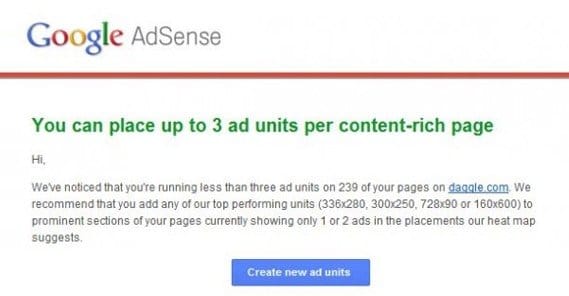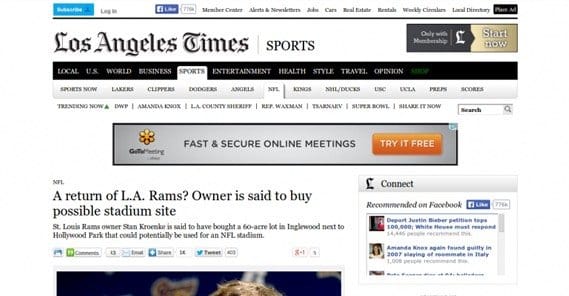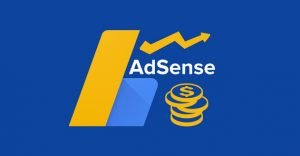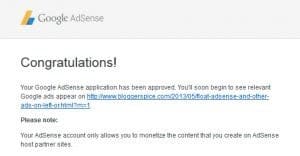How Many AdSense Ads Can You Safely Have on a Page?

Google’s AdSense program is one of the easiest to get into as a blogger, which makes it ideal for many people trying to monetize their sites. The thing is, there’s a constant balancing act you have to play to stay on Google’s good side. I’m not talking about SEO or about content, I’m talking about ad density.
Google has been fighting a battle for a long time against people using the web for little purpose other than to make money. Many of their algorithm updates in the past have been aimed at hurting sites that put revenue ahead of user value. Their ideal is a world where a user can find anything they want to know at a moment’s notice, and the people providing that information can be compensated for it at a reasonable rate.
The problem is, every time someone comes forward and gets a site just barely ranking, with a ton of ads, it hurts the world for everyone. That site rakes in the cash due to ad density, while other more legitimate sites lose out. Either they have to add more ads to make more money, or they have to suffer until something breaks. Generally Google will update their algorithm to punish the exploitative sites, but this is scant comfort for the legitimate sites that suffer for their legitimacy. Meanwhile, due to obscene payouts for ad-laced sites, ad values drop, conversion rates drop, ad blocker usage rises, and it gets harder to make a living blogging at all.
Google has a tricky position as both the enforcer of ad density restrictions and as a provider of ads themselves. They can’t show favoritism to their own ad program, but neither can they demolish the way their own system works and drive people away from one of their main sources of revenue. After all, Google needs their near-infinite money to keep being the industry juggernaut they are.
AdSense Limitations
Google, at one point in the past, had limitations on the number of ad units you could have on any given page. The number, back when they had a policy, was three. You could have zero, one, two, or three AdSense ad units per page, but any more than that and Google’s code would rebel. They wouldn’t display more, or if they did, it would flag you for a demotion in the search ranking next time you were indexed.
However, several factors led to this no longer being a good policy. First of all, people would circumvent it without really paying too much of a price for it. Sometimes four or five ad units on a page would work. Sometimes they would have two or three ad units from AdSense, a banner from another page, and an affiliate link. The limit didn’t really keep people from using more ads all that well.
Secondly, with the advent of infinite-scrolling pages and endless scrolling on mobile, the definition of what constitutes a “page” grew increasingly nebulous. If you have an infinite scroller, are you safe to put ad units between every discrete article? Should you space them out? Would loading too much of the page flag you as having more and more ads on one page until the density got out of hand?
Meanwhile, Google has added a few new ad units that work in different ways, expanding the inventory of possible ads that marketers can use. By removing the limit, they allow marketers and bloggers to test different layouts and combinations without jeopardizing their existing income streams.
The announcement of the removal of the three ads per page limit came in August of last year. From then until March of 2017, it was something of a free-for-all when it came to using as many AdSense ads as you wanted.
The New Limitations
While Google has not put new hard limitations in place, they have rolled out a new update – cheekily named “Fred” – that hurts sites that use too many ads.
Google has always had an emphasis on minimizing the number of ads per page. They don’t like it when a page has more ads that content, or so many ads it’s hard to find legitimate links to click. Many good marketers have taken this principle and run with it, focusing on the quality of individual ads over the quantity of ads available. A specific, narrow-focus post with a nice, focused AdSense ad or affiliate link would do quite well.
Take two examples: A and B. On page A, the blogger writes a general-use article that gets 10,000 views. They add in 5 AdSense ads, each of which pays per click. Of those 10,000 views, the ads as a whole convert roughly the same, at about 20 clicks each. This is a grand total of 100 clicks on the page, for a total conversion rate of 1% across all of those visitors.
On page B, the blogger writes a narrow-focus article on using a specific product. The article is of lesser interest, so it only gets 5,000 visitors; half the traffic of page A. However, because the people who visit are all keenly interested in the same thing, the blogger of page B knows what they want, and targets a specific ad to those viewers. This ad, being very focused, converts at a 5% rate. This gives them a total of 250 clicks to their ads.
As an added bonus, site B gets higher value ads in general, because they’re more specific and have higher conversion rates. Advertisers are willing to bid more for the space because it converts better for them as well.
The site B example is what Google strives for most sites to reach. However, all too many people don’t know how ad targeting works and they don’t put the effort in to study their audience. They create sites that work on volume more than on value. They make affiliate microsites and pages with half a dozen ad units and some minimal content.
These pages are all more or less considered “low value content” pages. This is pretty similar to the definition of “thin content” as considered by the Panda algorithm update. However, the low value content framework considers ad density as well. With Panda, content is looked at on its own. Thin content is defined based on average levels, lengths, and qualities of content in the same niche, and across the web as a whole.
You can produce content that is considered valuable, though perhaps on the thin side, and run a blog just fine. However, when you throw ads into the mix, especially too many ads, Google starts to recognize that you’re focusing more on the ads than you are on the content.
All of this is taken down a peg by the Fred algorithm update. Sites that have relatively low value – even if the content value is above the minimum threshold set by Panda – are running a big risk if they have ads on every page, including more than the usual two or three ads per page. The more ads you have, the more value you need for your content to outweigh them.
Think of ads as literal weights, holding your content down. You can produce content strong enough to carry them, but the more weights you have, the better, stronger the content needs to be.
A Safe Level of Advertising
So how many ads are safe, now, and how many are not? The answer is actually a sliding scale, which I’m sure you don’t want to hear. However, I’m going to attempt to quantify it based on my own assumptions. I don’t have data to back this up, but here are impressions I’ve seen.
First of all, you want to make your page as strong as possible. Some factors Google seems to have started to use as determination of content strength are:
- Content length and value density. This is similar to Panda’s idea of quality content, so you should already be familiar with it.
- Presence of multimedia. Having content other than pure text on your site is a sign of more effort going into producing it, so create and include tricky media like embedded social posts, videos, podcasts, and infographics. You don’t need to overdo it, but they should be present.
- Strong branding. A site with strong branding will benefit more than one with generic branding. Get yourself some color, a custom template if you’re using WordPress, a logo, and a brand name that isn’t an exact match or partial match keyword.
- “Free” content. Google likes to see non-profit content on your site. This is content created for user value that doesn’t have ads on it at all. You can simply remove ads from some content, or you can create specific content meant to add value to users who have already made their purchases.
Now for the scale.
At the low end, if your site isn’t very strong according to the above metrics, and if your content is relatively thin, go with fewer ads. I’m talking a weak site and content that tends to be around 1,000 words of mediocre or generic content. In this situation, I’d stick with one ad unit per page, maybe two if you test and find your rankings don’t drop.
Scaling up a bit, a slightly stronger site or a site with better content can handle more ads. If your articles are more valuable, include multimedia, or are closer to 1,500-2,000 words, you can handle more ads. This is where I’d go with 2-3 ad units from AdSense, or 1-2 ad units and an affiliate link. Remember, Google doesn’t have anything against affiliate links on their own, they just don’t like sites that are thin affiliate shells.
Moving up a bit from there, if your content is significant in quality – somewhere in the 2,000-4,000 word range – you can handle more ads. Here you can go with 3-4 per page, or 2-3 with affiliate links or on-site marketing. You can also reach this level if your content is shorter, more in line with the previous tier, but your site itself has very strong branding and effort put into it.
Once you get even higher than this, with a site with extremely strong branding and high quality content, you can basically do what you want. At that point, you have enough leverage and search value that you can probably afford to make a few mistakes and keep your number one ranking. It takes a lot to completely tank your rankings at this level.
One thing to remember for all levels, though, is that quality is still much greater than quantity. The more you can learn about your audience, the more you know about who they are and what they like. This allows you to create more content that is specific and high value to these users, which allows you to pull in even more value from those people. Ads you put on these pages don’t need to use volume to earn you money, they can make bank by being very targeted instead. One good, high converting ad can do much better than four smaller, lower converting ads, even if your site is excellent, your content is great, and your ranking is high.
Regardless of where you categorize your site and what your niche happens to be, I always recommend that you learn as much about your audience as possible. You should also test ad density. If you’re currently using three ads, reduce that number to two and see how things look. Does your ranking increase or decrease? Does your income rise or fall? Does your conversion rate change? Answering these questions will help you optimize your content and your ad presence moving forward.
 ContentPowered.com
ContentPowered.com








Good one…!!! Didn’t know about the new limitations. Thanks for sharing
I’m working on Adsense from many years. As of my knowledge, adsense is not that easy. Keeping rules and regulations in the mind, one should be very careful in doing so. Your information would help a lot of upcoming marketers. Thank you